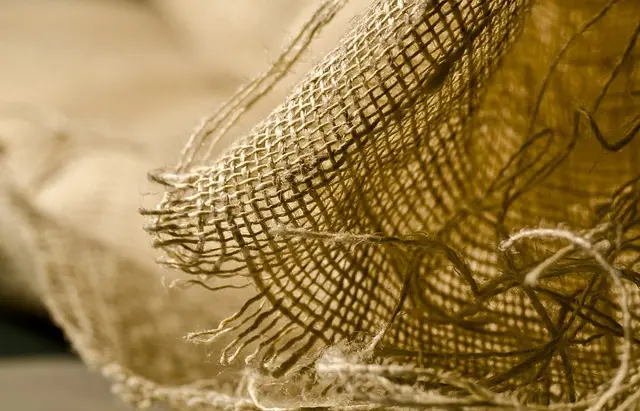Muscle soreness post-exercise is typically due to muscle fiber inflammation and micro-tears, which can be mitigated through various methods. Kratom, from the Mitragyna speciosa tree, has been traditionally used in Southeast Asia for pain management and may offer analgesic benefits through its distinct strains, each with unique alkaloid profiles. The kratom strain chart is an essential reference for understanding the different strains, categorized by their vein colors—red, green, and white—which provide varying degrees of sedation, energy, and pain relief. Red vein strains are primarily sedative and analgesic, green vein strains offer a balanced approach to pain management without heavy sedation, and white vein strains provide an uplifting effect alongside pain relief. Notably, Maeng Da is known for its strong analgesic properties, Bali for its soothing effects, and Indo for a blend of energy and comfort. Users are advised to start with moderate doses to gauge effects before adjusting, and it's crucial to consider individual responses and consult healthcare professionals as needed. The legal status of kratom varies by region, necessitating adherence to local laws. Safety and personalization in kratom use are paramount, with a strong emphasis on sourcing high-quality, lab-tested products to avoid potential side effects and negative interactions with other substances or medications.
Muscle soreness can be a persistent challenge for individuals engaging in rigorous physical activities, from athletes to fitness enthusiasts. Kratom, a botanical supplement derived from Mitragyna speciosa, has emerged as a potential aid in managing post-exercise muscle pain. This article delves into the mechanisms behind muscle soreness and explores kratom’s role in providing relief, with a focus on navigating the kratom strain chart to identify the most effective strains for alleviating discomfort. Additionally, it outlines proper application and safety precautions when incorporating kratom into your muscle recovery regimen. Understanding these aspects is crucial for leveraging kratom’s potential benefits for sore muscles without compromising health.
- Understanding Muscle Soreness and Kratom's Role in Relief
- Navigating the Kratom Strain Chart for Muscle Soreness Alleviation
- Effective Application and Precautions When Using Kratom for Muscle Recovery
Understanding Muscle Soreness and Kratom's Role in Relief

Muscle soreness can manifest as a result of various activities, including intense exercise, physical labor, or even from repetitive motions. The discomfort is often a natural response to micro-tears and inflammation within the muscle fibers, which are part of the body’s adaptive response to stress and injury. Understanding the origins of muscle soreness is crucial for selecting appropriate relief strategies. Enter kratom, a botanical supplement derived from the leaves of Mitragyna speciosa, a tree native to Southeast Asia. Kratom has been traditionally used in this region for its various health benefits, including pain management. Among the many kratom strains, each with distinct alkaloid profiles, some are particularly noted for their potential analgesic properties. For instance, the Maeng Da strain is celebrated for its potent effects, while the Bali and Indo strains are known for their soothing qualities.
The kratom strain chart is an invaluable tool for individuals seeking to harness kratom’s benefits for muscle soreness relief. The chart categorizes different kratom strains based on their vein colors—red, green, and white—each offering unique alkaloid profiles that can influence the user’s experience. Red vein strains are often associated with sedative effects and pain-relieving properties, making them a popular choice for muscle soreness. Green vein kratom strains offer a balanced effect between stimulation and relaxation, which can be beneficial for managing discomfort without excessive drowsiness. White vein strains are typically more energizing and uplifting but can also provide pain relief due to their alkaloid composition. It’s important to note that the effects of kratom can vary based on individual physiology, dosage, and the specific strain used. Therefore, users should approach its use with care, starting with lower doses to gauge their response before adjusting as necessary.
Navigating the Kratom Strain Chart for Muscle Soreness Alleviation

When exploring the realm of kratom for muscle soreness relief, understanding the kratom strain chart is paramount. This chart categorizes various kratom strains based on their origin, color, and potential effects. For instance, Maeng Da, a popular strain, is known for its invigorating properties that may help alleviate muscle discomfort. Users often report that this strain provides a balanced effect without the heavy sedation associated with some other kratom varieties. Another notable strain is Bali Kratom, which is derived from the island of Bali and is typically appreciated for its soothing effects, which can be beneficial for muscle relaxation.
Additionally, the kratom strain chart includes strains like Indo Kratom, which hails from Indonesia and is revered for its fine-tuned balance between energy and comfort. The White Vein strains, such as White Borneo or White Horn, are often favored for their uplifting qualities that can accompany pain relief. Conversely, Red Vein strains like Red Bali or Red Horn are sought after for their sedative-like properties, which might aid in muscle relaxation and pain management. It’s important to experiment with different strains to determine which one aligns best with your specific needs for muscle soreness relief. Always consult with a healthcare provider before integrating kratom into your wellness regimen, as individual experiences with kratom can vary greatly.
Effective Application and Precautions When Using Kratom for Muscle Recovery

When exploring the use of kratom for muscle recovery and soreness relief, it’s crucial to understand the nuances of different kratom strains as outlined in a comprehensive kratom strain chart. The mitragynine and 7-hydroxymitragynine alkaloids found in kratom leaves are believed to play a role in pain management, which can be particularly beneficial for individuals experiencing muscle soreness. To effectively apply kratom for muscle recovery, it’s advisable to start with a lower dosage to gauge your body’s response before considering higher amounts. The optimal strain and dosage can vary based on personal physiology and the severity of muscle soreness; thus, a kratom strain chart can serve as a valuable resource for determining the right strain for your needs.
Precautions are equally important when incorporating kratom into your muscle recovery regimen. It’s essential to use high-quality, lab-tested kratom products from reputable sources to avoid contaminants and ensure purity. Additionally, individuals should be aware of their body’s tolerance and the potential for side effects, which can include nausea, dizziness, and constipation. Regular monitoring of your body’s reaction is necessary, as kratom can interact with other substances and medications. Users should also adhere to local laws and regulations regarding kratom use, as its legal status varies by region. Lastly, those with pre-existing health conditions or who are taking prescription medications should consult with a healthcare professional before using kratom for muscle recovery to avoid adverse interactions.
Muscle soreness can be a significant hindrance to an active lifestyle, yet relief may be found through the strategic use of kratom supplements. By understanding the mechanisms behind muscle soreness and exploring the nuances of the kratom strain chart, individuals can effectively harness the potential benefits of these supplements for muscle soreness alleviation. It’s crucial to apply these remedies judiciously, adhering to safety guidelines to ensure their efficacy without compromising health. For those interested in incorporating kratom into their recovery regimen, a well-informed approach guided by the strain chart can be a valuable tool for targeted relief.






